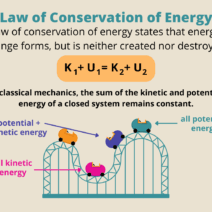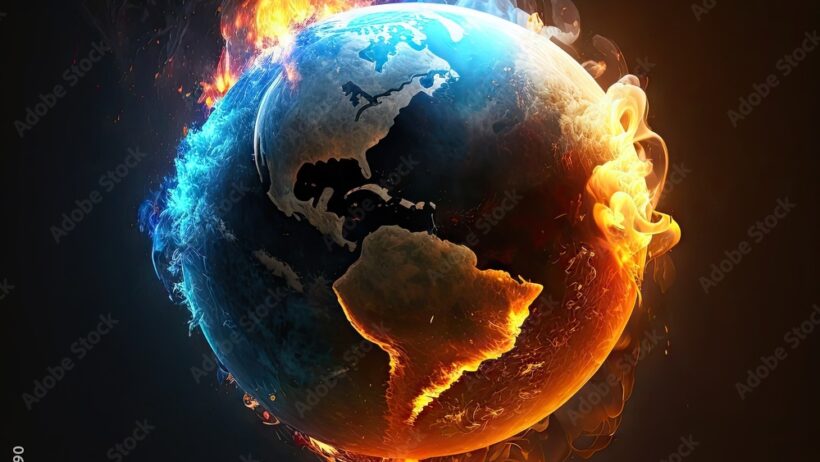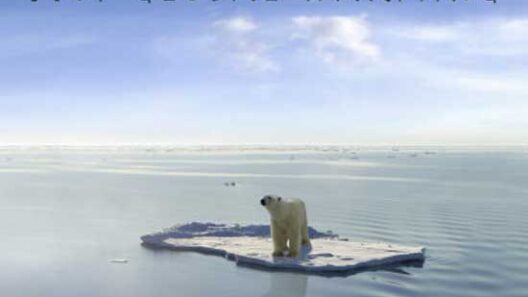Wildfires have increasingly become emblematic of modern environmental challenges, drawing attention to their catastrophic consequences on ecosystems, communities, and global climate patterns. While the mesmerizing sight of flames engulfing vast tracts of forest can capture viewers’ curiosity, the reality is profoundly dire: these fires are growing in both frequency and severity due to climate change. This relationship between global warming and wildfires is complex and multifaceted, warranting a closer examination.
To understand how global warming exacerbates wildfires, it is essential to first grasp the mechanics of fire itself. Wildfires require three fundamental components: heat, fuel, and oxygen. Through heightened temperatures, prolonged drought, and shifting weather patterns, climate change significantly influences each of these elements. As temperatures rise, so too does the evaporation of moisture from the ground and vegetation, leading to the accumulation of dry, flammable materials—an ideal scenario for wildfires to ignite and spread.
Over the past few decades, trends illustrate a stark escalation in the incidence of wildfires, particularly in regions such as the western United States, Australia, and parts of Southeast Asia. Drought conditions, which have become more persistent due to climate change, render landscapes receptive to combustion. The number of days characterized by excessively high temperatures is rising, further drying out vegetation and creating conditions ripe for wildfires. Additionally, warmer winters contribute to the accelerated growth of vegetation in spring, which later serves as ample fuel for summer fires.
The consequences of these fierce infernos extend beyond immediate destruction. Wildfires release copious amounts of carbon dioxide and other greenhouse gases into the atmosphere. This phenomenon sets up a vicious cycle where emissions from wildfires contribute to climate change, which in turn fosters conditions conducive to further wildfires. Scientific assessments indicate that the increased frequency and intensity of these fires can account for a significant percentage of the annual total carbon emissions from certain regions. Moreover, wildfires negatively impact air quality, result in health risks for local populations, and have severe economic implications due to the destruction of homes, infrastructure, and livelihoods.
Climate change is not the only driver behind the intensification of wildfires; land management practices significantly contribute to the problem as well. Historically, fire suppression has been a common approach to controlling wildfires. However, this can lead to an accumulation of dead vegetation and underbrush—conditions that are counterproductive to forest health. Such practices can create a fire-prone environment where, when a fire does ignite, it becomes decidedly more catastrophic due to the expansive fuel available. Moreover, urbanization has expanded the wildland-urban interface, where homes and businesses are intermingled with natural landscapes. This blending heightens the risk of property loss and human casualties during a wildfire event.
The ecological impacts of wildfires are complex. While it is true that some forest ecosystems depend on periodic fires for regeneration, the unprecedented scale and intensity of modern wildfires can eradicate species, disrupt habitats, and lead to long-term ecological shifts. Many flora and fauna are unable to adapt to the sudden changes wrought by intense fires, leaving them vulnerable to extinction. In contrast, invasive species may thrive in the aftermath, further destabilizing the delicate balance of these ecosystems.
In an attempt to address the burgeoning threat of wildfires exacerbated by climate change, several strategies are being explored. Improved land management practices, such as controlled burns and better vegetation treatment, are promising avenues for reducing the severity of wildfires. Initiatives focused on restoring forest health and creating defensible spaces around vulnerable communities can mitigate risks. Nonetheless, these efforts necessitate a holistic approach that considers the underlying drivers of climate change—chief among them, the reliance on fossil fuels and unsustainable land use practices.
Public awareness of the connection between climate change and wildfires has increased, prompting discussions about policy changes. Legislative initiatives that promote renewable energy, invest in sustainable forestry practices, and enhance community preparedness can play pivotal roles in curbing the wildfire epidemic. Collective action is essential in galvanizing a proactive response to this urgent crisis.
As the planet continues to experience rising temperatures, the implications for wildfires are severe. Forecasters predict that without significant reductions in greenhouse gas emissions, the frequency and intensity of wildfires will only worsen. It is crucial that societies confront this issue head-on, understanding that the flames that ravage forests are not merely a natural disaster but a consequence of humanity’s larger environmental footprint.
Looking ahead, cooperation at both local and global levels will be necessary to address the underlying causes of climate change while also preparing for the resulting challenges, including severe wildfires. Engaging in discussions about sustainable practices and supporting policies aimed at reducing carbon emissions can collectively contribute to mitigating this hazard. With the flames of climate change flickering ever closer, humanity must rise to the occasion, recognizing that the future of our forests—and the planet—depends on urgent and decisive action.







